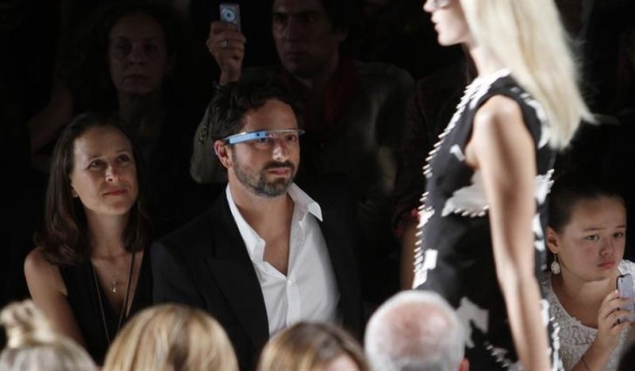- Home
- Others
- Others News
- Google patent points to a pay per gaze advertising model in the future
Google patent points to a pay-per-gaze advertising model in the future

The move from 'clicks' to pupil dilations may come after technology giant Google's patent for a Gaze Tracking System became public last week.
Pay-per-click is an Internet advertising model currently used to direct traffic to websites, in which advertisers pay the publisher - typically a website owner - when the ad is clicked.
Originally filed in May 2011, the patent presents an idea for wearers of a head mounted device - and in 2013 observers are guessing this may be Google Glass - to have gaze tracked so that the system can pin down exactly what the user is looking at and even the emotional responses via pupil dilation, phys.org reported.
Information about where the user was gazing when viewing the external scene would be sent over to a server. An image recognition algorithm would be executed on the scene images to identify items within the external scenes viewed by the user.
A gazing log tracking the identified items viewed by the user would be generated.
"To date eye tracking systems have mostly been limited to research endeavours because of the intrusiveness, high cost, and reliability of these systems," according to the patent.
"A technique and system that can provide a reliable, low cost, and unobtrusive, eye tracking system could have a variety of useful everyday applications," it said.
Advertisers could be charged according to the number of views an ad received while wearing Glass, both offline and online. Google's patent refers to the process as "pay-per-gaze" advertising.
Google plans to set up an advertising model of pay-per-gaze.
"Under a pay per gaze advertising scheme, advertisers are charged based upon whether a user actually viewed their advertisement," the patent explained.
"Pay per gaze advertising need not be limited to on-line advertisements, but rather can be extended to conventional advertisement media including billboards, magazines, newspapers, and other forms of conventional print media.
"The system would involve "determining which, if any, of the identified items within the external scenes viewed by the user are advertisements; and charging advertisers associated with the advertisements based at least in part on a per gaze basis," it said.
"To protect individual privacy, personal identifying data may be removed from the data and provided to the advertisers as anonymous analytics.
"In one embodiment, users may be given opt-in or opt-out privileges to control the type of data being gathered, when the data is being gathered, or how the gathered data may be used or with whom it may be shared," the patent said.
For the latest tech news and reviews, follow Gadgets 360 on X, Facebook, WhatsApp, Threads and Google News. For the latest videos on gadgets and tech, subscribe to our YouTube channel. If you want to know everything about top influencers, follow our in-house Who'sThat360 on Instagram and YouTube.
- Samsung Galaxy Unpacked 2025
- ChatGPT
- Redmi Note 14 Pro+
- iPhone 16
- Apple Vision Pro
- Oneplus 12
- OnePlus Nord CE 3 Lite 5G
- iPhone 13
- Xiaomi 14 Pro
- Oppo Find N3
- Tecno Spark Go (2023)
- Realme V30
- Best Phones Under 25000
- Samsung Galaxy S24 Series
- Cryptocurrency
- iQoo 12
- Samsung Galaxy S24 Ultra
- Giottus
- Samsung Galaxy Z Flip 5
- Apple 'Scary Fast'
- Housefull 5
- GoPro Hero 12 Black Review
- Invincible Season 2
- JioGlass
- HD Ready TV
- Laptop Under 50000
- Smartwatch Under 10000
- Latest Mobile Phones
- Compare Phones
- Moto G15 Power
- Moto G15
- Realme 14x 5G
- Poco M7 Pro 5G
- Poco C75 5G
- Vivo Y300 (China)
- HMD Arc
- Lava Blaze Duo 5G
- Asus Zenbook S 14
- MacBook Pro 16-inch (M4 Max, 2024)
- Honor Pad V9
- Tecno Megapad 11
- Redmi Watch 5
- Huawei Watch Ultimate Design
- Sony 65 Inches Ultra HD (4K) LED Smart TV (KD-65X74L)
- TCL 55 Inches Ultra HD (4K) LED Smart TV (55C61B)
- Sony PlayStation 5 Pro
- Sony PlayStation 5 Slim Digital Edition
- Blue Star 1.5 Ton 3 Star Inverter Split AC (IC318DNUHC)
- Blue Star 1.5 Ton 3 Star Inverter Split AC (IA318VKU)












